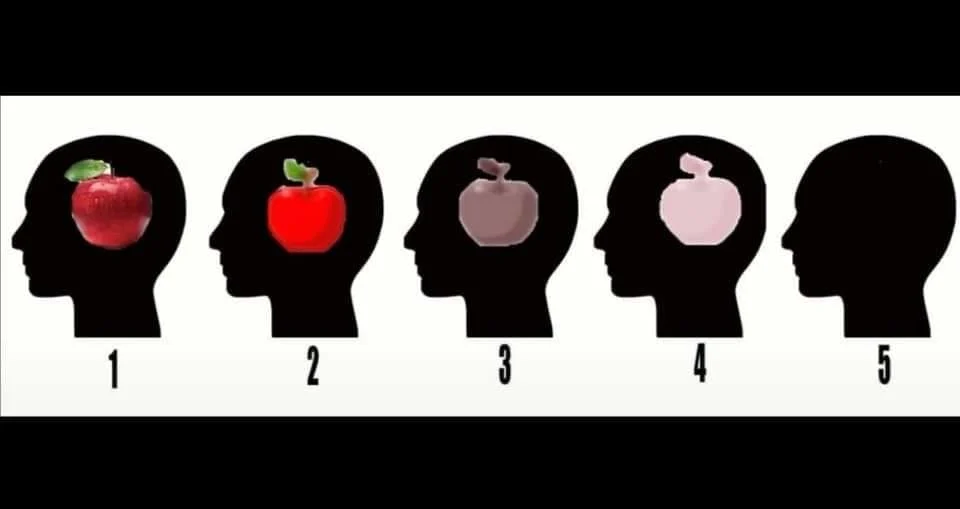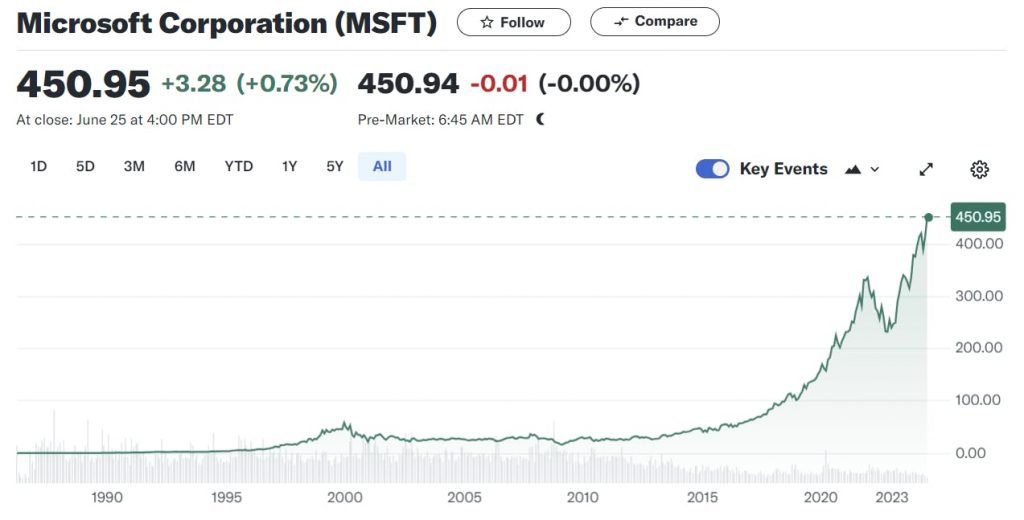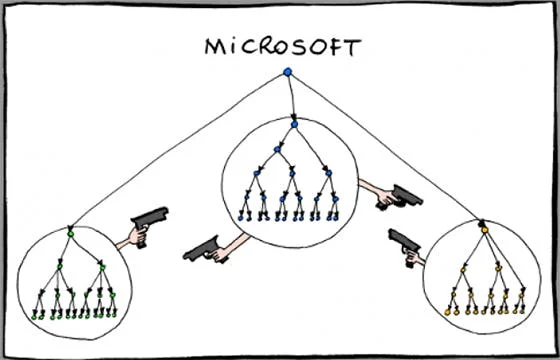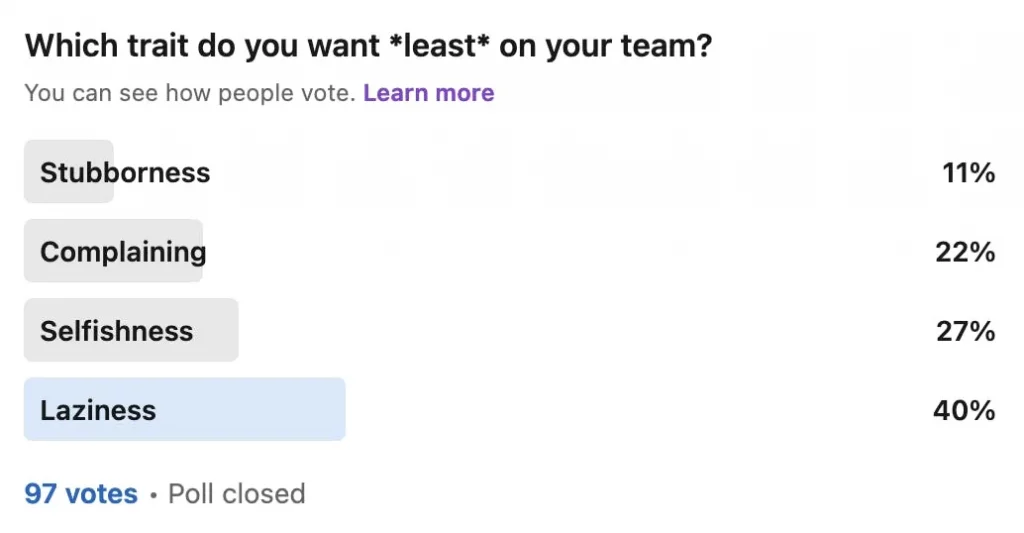When you imagine an apple, which do you see?

Every few months this image goes viral as people are surprised how everyone is different in what they can imagine, and with what level of fidelity.
In today's edition, our poll looks at a similar question, and compares individual contributors to managers, while also looking at the culture change at Microsoft under Satya Nadella, a new study on AI, and more.
Let’s dive in…
Table of contents:
- 🥘 Food for Thought on Fixing Microsoft's Culture
- 📰 News & Reports for Managers on New Studies on AI's Impact
- 📖 Your Leadership Long Read on How to Start 1 on 1s with Your Team
- ❓ Poll of the Week on Your Inner Dialogue (or lack thereof)
➡️ Did a friend forward this to you? Get every issue straight to your inbox by signing up here.
Note: This is a preview of our weekly leadership newsletter, Lighthouse Leadership Weekly (LLW).
To get this sent to your inbox every week, along with our latest long form essays on this blog, you can sign up here.

🥘 Food for Thought
"“I like to think that the C in CEO stands for culture. The CEO is the curator of an organization’s culture. …anything is possible for a company when its culture is about listening, learning, and harnessing individual passions and talents to the company’s mission." - Satya Nadella, CEO of Microsoft
I was reminded of this quote from Satya Nadella when I came across this great share about the change in Microsoft's culture:
Long time Microsoft employee on how Satya Nadella fixed the company's culture by getting rid of mandatory team stack ranking pic.twitter.com/s6ax29hNYp
— Peter Yang (@petergyang) October 2, 2024
As a reminder, Satya's changes had an incredibly dramatic impact on the fate of Microsoft:

"Rank and Yank" destroys your company.
The important lesson within that post is that "Rank and Yank" is a terrible way to build a company.
For the uninitiated, the idea of "Rank and Yank" is that you rank your team every year and the top people get a bonus, and the bottom people get fired. No. Matter. What.
That means even if you have a great team, someone is getting canned.
And even if you have multiple stars, only some of them get a bonus.
Not surprisingly, this has destructive consequences:
- The best people don't want to be on the same team: If you're on a team with another star, you have to fight each other to be the one rewarded. Any smart A player will thus want to avoid any opportunities like that.
- Everyone is looking over their shoulders. Imagine looking around your team and realizing 1 or 2 of you are definitely gone end of year no matter how well you all perform.
- Top players must have sharp elbows. Rather than work together, if you know there are more A players than there are spots for top performers on your team you have to fight it out for the top spot. Sabotage, undermining each other, and fighting over assignments are all incentivized.
- It's harder to motivate everyone. If the top spot is already taken, it's hard to want to do more than make sure you're average. And if you look around and realize you're definitely in the bottom 20%, there may be no point in trying to improve.
- Managers have weaker teams. No team can become too strong because of these incentives and the chilling effect it has on collaboration.
Is it any surprise this used to be how the culture at Microsoft was described?

A huge part of culture is what and how you reward your people.
It makes sense that while Satya was shifting Microsoft from its cutthroat culture to servant leadership, he focused on how teams were evaluated. The Rank and Yank approach is antithetical to the "listening, learning, and harnessing individual passions and talents" that he was striving for.
This should sound familiar, as Mark C Crowley's Lead from the Heart approach (which is very similar to servant leadership), speaks to exactly this approach:
"If you have 30 people working for you and 25 of them met or exceeded the goal, you have to recognize all 25.
A lot of times we go, "Well, it's like the Olympics, we're just going to give gold, silver and bronze.” If you want to destroy the spirit of the other 17 people that met their goals and your expectations, fail to acknowledge them.
People should know that if they meet your expectations and they meet the goals you set for them, that they're going to get acknowledged. "
Rank and Yank was a lot more popular a few decades ago, but the approach still lives on today.
If the toxic effects we outlined aren't enough to convince you to let it go, I hope the incredible results Microsoft had after abandoning them is convincing.
It's one of many things Satya changed in Microsoft's culture, which we wrote about in depth. You can learn about all the changes he made here.
📰 News & Reports for Managers
📌 AI continues to deliver gains, but not job losses
This is quite the finding:
"It is a randomized controlled trial using the older, less-powerful GPT-3.5 powered Github Copilot for 4,867 coders in Fortune 100 firms. It finds a 26.08% increase in completed tasks."
It really doesn't get better than studying nearly 5,000 people at work to measure the impact of a new technology, which is what University of Wharton professor Ethan Mollick shared recently:
Big paper I have been waiting for: what are the real impacts of AI on programmer productivity?
— Ethan Mollick (@emollick) September 5, 2024
It is a randomized controlled trial using the older, less-powerful GPT-3.5 powered Github Copilot for 4,867 coders in Fortune 100 firms.
It finds a 26.08% increase in completed tasks. pic.twitter.com/V8LYyL5YJk
What's most impressive is that this is for an older model (GPT - 3.5, when we're up to GPT - 4o with o1 in preview).
That means those gains are just beginning to compound. The AI models are only going to get better.
Is your team using AI? Now is the time to start.
If I told you your competition was getting 25% more done every day than you, would that shake you in action?
If I said you can get 25% more out of everyone on your team, would you want to see what that's all about?
This is the threat, and promise of AI. You don't want to get left behind.
BONUS: AI helps your low performers the most.
You may recall this study from an earlier edition of the Lighthouse Leadership Weekly, also from Mollick:
A persistent result of studies of AI on work (like our BCG study👇) is that AIs improve the performance of bottom performers.
— Ethan Mollick (@emollick) April 23, 2024
Yet AI is frequently benchmarked to average or best performers. A winning strategy could be to focus on maximizing the benefits of the leveling effect. pic.twitter.com/N4s5mWRGfA
All of this means that not only can you boost your team overall, but it can be a great way to improve your low performers.
I saw this myself as I working on coding my own MVP app this week. I'm not a particularly good coder and I was amazed what AI could do to help me in ways that would be impossible or incredibly time-consuming previously.
This led to me realizing:
What if the solution to junior remote employees not getting enough coaching/mentorship is solved by AI being the best mentor/coach ever with infinite time & availability to help?
— Jason Evanish (@Evanish) October 11, 2024
I previously thought mentoring was a strong case for "return to office", but maybe AI fixes that.
We are just starting to experience the benefits of AI. It's going to change everything we do at work including how we work.
I'm excited to watch all the changes and share them with you.
📖 Your Leadership Long Read on How to Start 1 on 1s with Your Team
It's important to remember the fundamentals. And if you're just starting out, you need to focus on them first.
That's why we revisit some of our classic advice from time to time, especially when it comes to 1 on 1s.
And nowhere does this matter more than starting your 1 on 1s on the right foot.
Many new managers are nervous about getting started and aren't sure what to say. That's why we have a post dedicated to everything you need to know including sample messages and first timer advice.
If you've been meaning to finally start having 1 on 1s, or have a friend, team member, or fellow manager that needs to start them, this is the perfect post for you.
See for yourself: Learn how to Start 1 on 1s with Your Team here.
❓ Poll of the week
Last week's poll looked at the traits we want least in a team member:

While I think we can all agree we'd prefer people not have too much of any of these traits, it's interesting that laziness stood high above the others.
In some cases, laziness could actually be good.
The Lazy Engineer
The most prominent example of what I would call "positive laziness" comes from engineering; a lazy engineer may make up for that behavior with how they channel their laziness into effectiveness.
Confused? Here's how it works:
If I'm a lazy engineer, I'll look for ways to get more work done with less effort. This is where you'll often find a clever engineer figures out how to automate part of their job, or a better/faster/easier way to do a task.
Their motivation to do less becomes your company's long-term gain.
Unfortunately, not all lazy employees are efficiency experts in disguise, but it is a time when a negative trait can have a silver lining.
----
This time, we're going in a very different direction with a question that was inspired by a recent discussion I had with a friend.
There is an interesting divide in how people think. Some people have an inner dialogue running in their mind, a sort of inner voice that captures their thoughts, ideas, and sometimes debates. For those with it, they can't imagine a world without it, while those that lack one, can't imagine having a voice like that in their head.
With that in mind, I'm curious which side of the divide you are on:

So tell me: Do you have an inner dialogue? Share your response here now.
Sign up to get this newsletter & our latest blog posts straight to your inbox:




